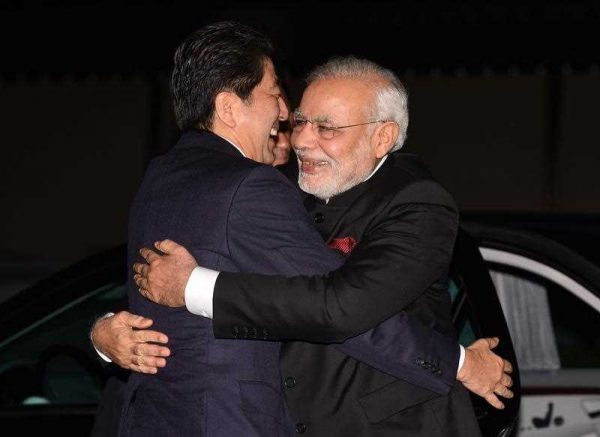The existing ties between India and Japan are underpinned by commercial bonds. Trade between India and Japan totalled US$18.61 billion in the 2012-13 financial year and the two sides have set a target of US$25 billion by 2014. This is relatively low given the size of both the economies and compared to both countries’ trade with China. In 2013, trade between India and China totalled US$65 billion, while trade between Japan and China totalled US$310 billion. This is somewhat ironic as India and Japan are said to be forging a regional counterbalance to an increasingly assertive and powerful China at a time when their respective trade volumes with China are considerably higher than bilateral trade between them.
Japan is India’s fourth largest investor, with cumulative foreign direct investment (FDI) of about US$16 billion in the last decade and a half. The Indian automobile sector in particular owes a lot to Japanese investments in terms of development of advanced supply chains, growth in ancillary units and technology transfer. In 2011, India and Japan signed the Comprehensive Economic Partnership Agreement.
Japan has reportedly promised investment and financing inflows of around US$35 billion to shore up India’s infrastructural sector. Japanese official development assistance (ODA) through the Japan International Cooperation Agency (JICA) has been particularly important for India which has been one of the largest recipients since 2003. ODA is heavily directed towards long-term participation in infrastructure development in India. As of mid-2013, Japanese loan assistance to India amounted to US$15.91 billion, spanning 67 projects. The cumulative Japanese ODA loan commitment to India as of 31 May 2013 was US$37.61 billion. In line with the specific requirements of the Indian economy, a third of Japanese ODA is located in the energy sector. The transportation sector also received a sizeable share. During Modi’s visit, Japan and India signed agreements to secure Japanese funding for transport infrastructure and the development of industrial cities.
Important deals were also made in trade and FDI, including Japan’s commitment to technology transfers in defence. India will buy the Japanese built US-2 Amphibian aircraft and Japan will transfer advanced technology to India. This will pave the way for the two countries to work together in building a local aircraft industry in India. Modi’s ‘come, make in India’ campaign has been well received in Japan. Japan has removed restrictions on six Indian entities in the defence sector.
Japan has also responded to Modi’s move to remove India’s FDI cap on railway infrastructure. Japan offered financial, technical and operational help in introducing bullet trains in India. This is likely to be initiated in the Mumbai-Ahmedabad route. Besides presenting Japanese firms with a lucrative business opportunity, this would also help fill India’s infrastructure gap. The Chennai metro project is already being funded by JICA, as are the Delhi-Mumbai and the Chennai-Bangalore Industrial Corridors. Japan is more than happy to help India fortify its high speed railway infrastructure at a time when China is racing ahead with superfast bullet trains.
But, despite officials from both sides being ordered to prioritise the issue, a nuclear deal remains elusive.
Japan’s nuclear energy related sales are a key part of its infrastructure-related exports. Japanese firms produce vital reactor components and are keen to supply them to India. But, because India is a non-signatory to the Non-Proliferation Treaty, Japan is currently having a hard time finalising the agreement. Civil nuclear energy talks were hit badly following the Fukushima disaster in 2011 but Japan agreed to resume negotiations last year. On the positive side, the Japanese public is now more receptive to a nuclear energy deal with India. Modi stated there is now an improved ‘understanding’ between the two countries after some ‘frank’ discussions about civil nuclear energy. Both Abe and Modi are reportedly keen to fast track discussions to enable the deal as soon as possible.
One underreported achievement from Modi’s visit is the revival of the agreement between Japan and India to trade in rare earth minerals, which was beset with conflict over pricing. This is important as China currently has a monopoly on this sector. Rare earth metals are a key input for production in high-tech industries ranging from smartphones and notebook computers to aircraft.
Finally, Modi’s assurance that India will fast track Japanese investment in India and set up a special team in the prime minister’s office to facilitate Japanese FDI is a signal to the world about the special position India accords to Japan. The crucial infrastructural partnership between Japan and India has been further solidified with this visit.
Pravakar Sahoo is Associate Professor at the Institute of Economic Growth.
Abhirup Bhunia is a researcher at the Institute of Economic Growth.

